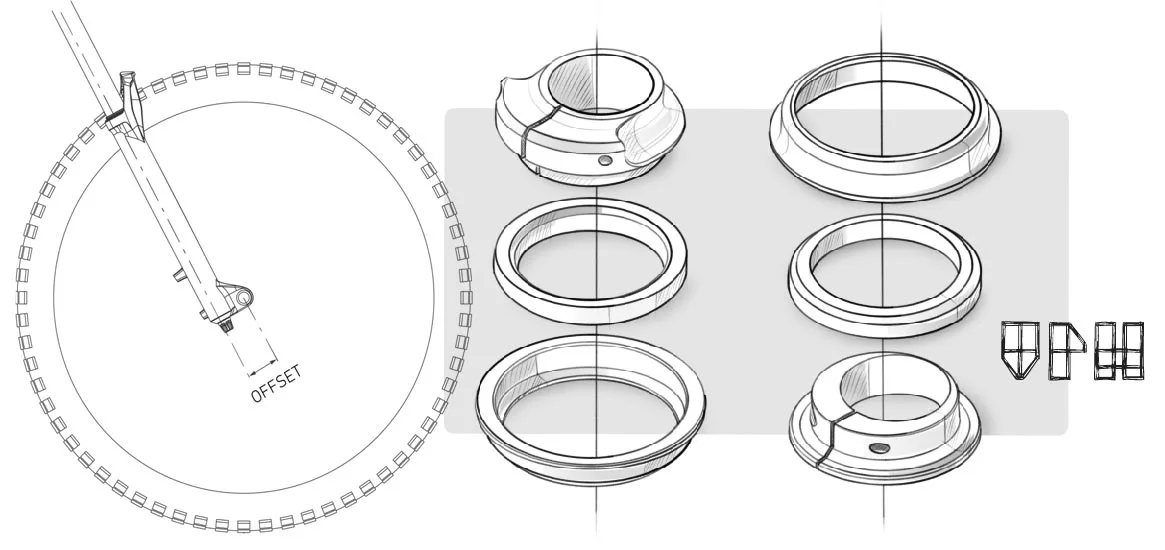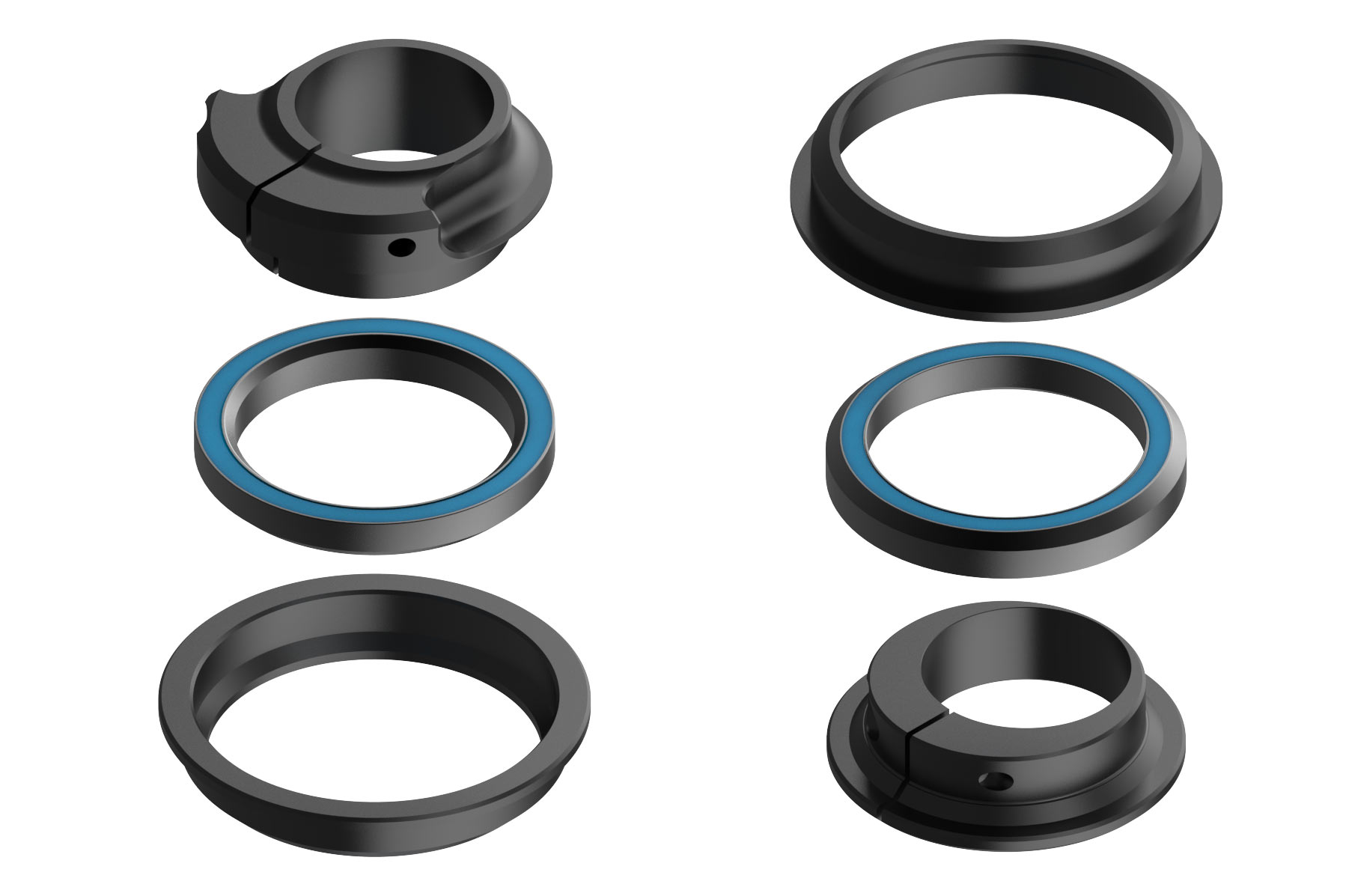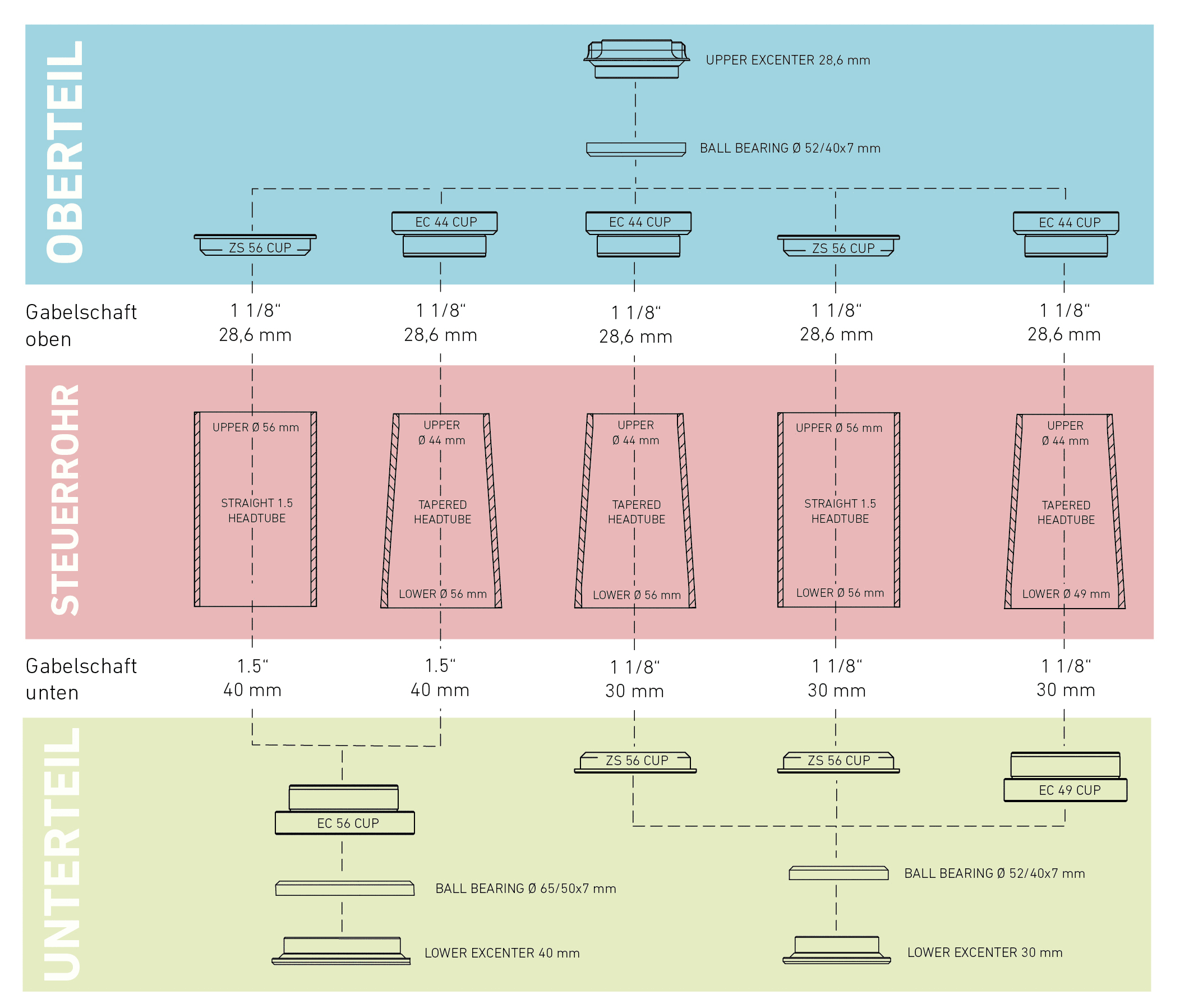We’ve seen a lot of angle-adjust headsets of the years, giving riders the ability to tweak their head angle slightly. But German upstart EMGR is taking a different approach – making the bearing seats on your fork’s steerer tube eccentric, not offset or eccentric headset cups in your frame.
Their new Virtual Pivot Headset allows you to change your fork’s effective Offset by +/-4mm, for a total range of 8mm. The benefit is that you can now adjust your fork’s Trail without affecting the head angle, which gives you a more precise way to fine-tune your bike’s handling.
The video above shows how it works… in English and it’s still a little tricky to comprehend, but the visuals make it clear(er).
Rather than use angled upper and lower cups at opposing positions (the AngleSet way) or two offset eccentric headset cups (the ReachSet way), the EMRG Virtual Pivot Headset either moves the steerer tube forward or backward inside the head tube. This moves the axle in relation to the tire’s contact patch, and that difference in space is the “Trail” figure in a bike’s geometry.
It also means that your fork now rotates around a virtual axis, not concentric with the fork’s steerer tube. That also results in an effective change to frame reach, as well. But since the bearing seat on the steerer is eccentric, even that changes a bit as you turn.
Fork Offset is the distance the axle sits in front of the steering axis. It has an inverse relationship with Trail – the longer the Offset, the shorter the Trail.
Move the steerer forward and you have less Trail, which will make it turn more sharply but be slightly less stable at high speed. Good for tight courses where quick maneuvering is important. Move it backward and Trail increases, making the bike more stable in a straight line and subtle, sweeping corners. But steering will feel a bit slower.
EMRG admits the changes in handling will be subtle and the effect decreases the harder you turn (it would effectively zero out when the bar is turned 90°), but for the rider who wants that extra bit of tuning, it’s a simple solution.
Which bikes will fit the EMRG headset?
It’s worth noting that this is intended for longer travel bikes, with 150mm travel being the minimum recommended application. And it also results in thinner bearings with smaller diameter balls, so the bearings themselves will likely need replacing more often.
They offer three upper and three lower headset cups to fit a wide variety of frames, with some combinations compatible with the straight steerers found on dual crown DH forks and standard tapered 1-1/8″ to 1.5″ steerers. Options include:
UPPER
- EC44
- EC49
- ZS56
LOWER
- EC49
- ZS56
- EC56
MSRP is 159.00, available now.


